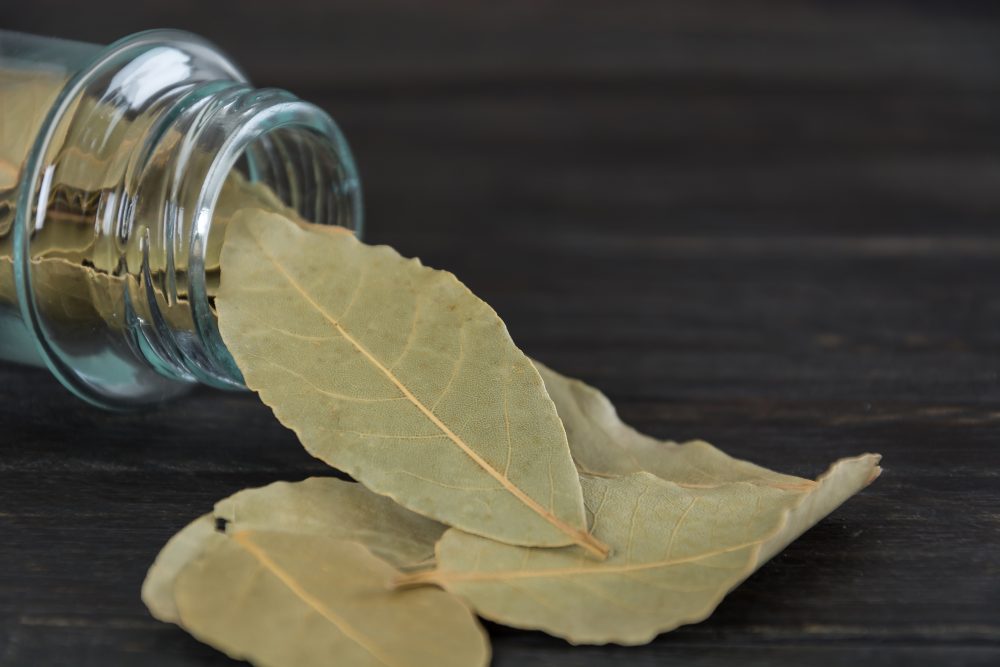There are those ingredients that are so powerful that they undeniably make an impact; spices or herbs that change the very essence of a dish. Cumin, coriander, Aleppo pepper… Then there are bay leaves. So many recipes call for them, but does anyone actually know what they taste like? And for such a subtle ingredient, is there really any value, or can the skeptical cook go without?
This was the question a recent caller on Milk Street Radio posed to hosts Christopher Kimball and Sara Moutlon.
“If you made a soup or stew without a couple of bay leaves in it, could I tell the difference? Probably not,” Kimball admitted off the bat. Having moved on from the subtleties of French cooking in favor of bold flavors and ingredients, Kimball doesn’t typically use them anymore. As he put it, “I don’t do subtle cooking anymore and bay leaves are just… it’s like the dogs can hear it but I can’t. It’s out of the range of human taste.”
Moulton, on the other hand, takes a more forgiving stance. “Sometimes you put something in a recipe and just because it doesn’t shout out and say ‘look at me’ doesn’t mean it doesn’t contribute to the dish.”
Indeed, plenty of our recipes here at Milk Street call for bay leaves. Places you’d expect them, like a soup or stew, as in our Black Bean and Sweet Potato Stew (Ndambe), where they play a supporting role. And places where they’re crucial to the backbone of a recipe, like our Citrus and Bay Sangria or Sweet Potato Gratin with Vanilla Beans and Bay Leaf.
The recipe in question makes a difference, but so too does the texture and variety. After another radio caller—Daniel Moerman, of Ann Arbor, Michigan—wondered whether there is a meaningful difference between fresh and dried bay leaves, as well as whether the variety matters when it comes to bay leaves’ flavor, we did some homework.
We compared three types of bay leaves: fresh bay laurel (the variety typically found in plastic containers in the produce section of the supermarket), dried Turkish bay (a type commonly sold jarred in the spice aisle, along with dried California bay leaves) and dried Indian bay (in the U.S., available mostly at Indian grocery shops). We immediately noticed a difference in aroma.
The dried Turkish bay had an earthy, peppery scent; the dried Indian bay smelled sweeter, with strong notes of cinnamon and clove; and the fresh bay was almost pungent, with notes of pine and mint. We then used each to season a batch of plain long-grain white rice, adding the bay to the cooking water. The dried Turkish bay lent a subtle peppery finish, while the Indian was more floral and delicate. The fresh bay was easily the most prominent, giving the rice a striking eucalyptus-like flavor.
Turns out, drying weakens the flavorful and aromatic oils in bay.
This merits care when cooking with fresh bay—too much can easily overpower a dish. If substituting fresh bay leaves for dried, use half what the recipe calls for (or use smaller leaves). And if you’re using them in long-cooking stews and soups, remove them midway through cooking to prevent the flavor from becoming too strong.
If you want to coax more flavor out of dried bay leaves, on the other hand, a recent commenter on our Q&A Forum has a suggestion. He grinds the leaves in a coffee grinder that he uses as a spice mill, and then taps the ground powder into a tea strainer, sieving the dust into a jar. Food editor Matt Card agrees it’s a great tip for adding bay flavor while eliminating the pesky task of fishing out the leaves at the end.
“I use bay leaves by the handful in roasted vegetables to add aroma and flavor. My family is used to picking leaves out of their food! But it’s easy to underestimate the capacity of bay leaves to add flavor. We've even got sweet desserts flavored with bay—the flavor cuts through monotone sweetness to add dimension,” Card says.
So, when determining whether or not bay leaves are critical, consider the recipe, but also the variety, and, depending on who you’re asking, your suspension of disbelief. As Kimball would say, “You have to believe in it or not."




